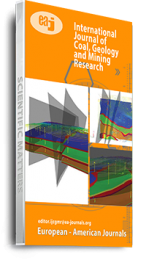Thar geology encompasses of three main stratigraphic sedimentary formations i.e. Bara – coal bearing (oldest), sub-recent and dune sand (youngest). These formations are overlain on granitic igneous basement throughout the Thar region. Pakistan’s first largest open pit lignite mining operations are on-going at Thar Coal Mine Block II which is located at the centre of Thar region. This study is focused in exploring the origin of sulfur content in lignite at Thar Coal Mine. Coal seams (part of Bara formation) at Thar Coal Mine are comprised of pollen streaks which are plant micro-organisms (organic) and generally found in lignite indicating the un-maturity and low grade of coal. Pollens can be easily identified in coal seams by its shiny lustre (yellow color). These pollen streaks are dominant in CL 2-3 coal seam which has the highest sulfur content (2.1%). The geochemistry of pollen streaks was studied separately to evaluate its influence in the overall coal quality. The results revealed that it contains very high sulfur content along with high net calorific and ash values. Thus, pollens are considered as one of the main contributors of sulfur in Thar coal seams. Another contributing factor for the presence of sulfur in Thar coal is the occurrence for pyrite mineral which is very common in coal deposits since coal formation is mainly takes place in reducing environment.
Keywords: lignite, origin, pollen, pyrite, sulfur, thar coal mine

